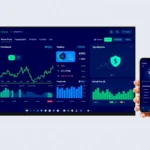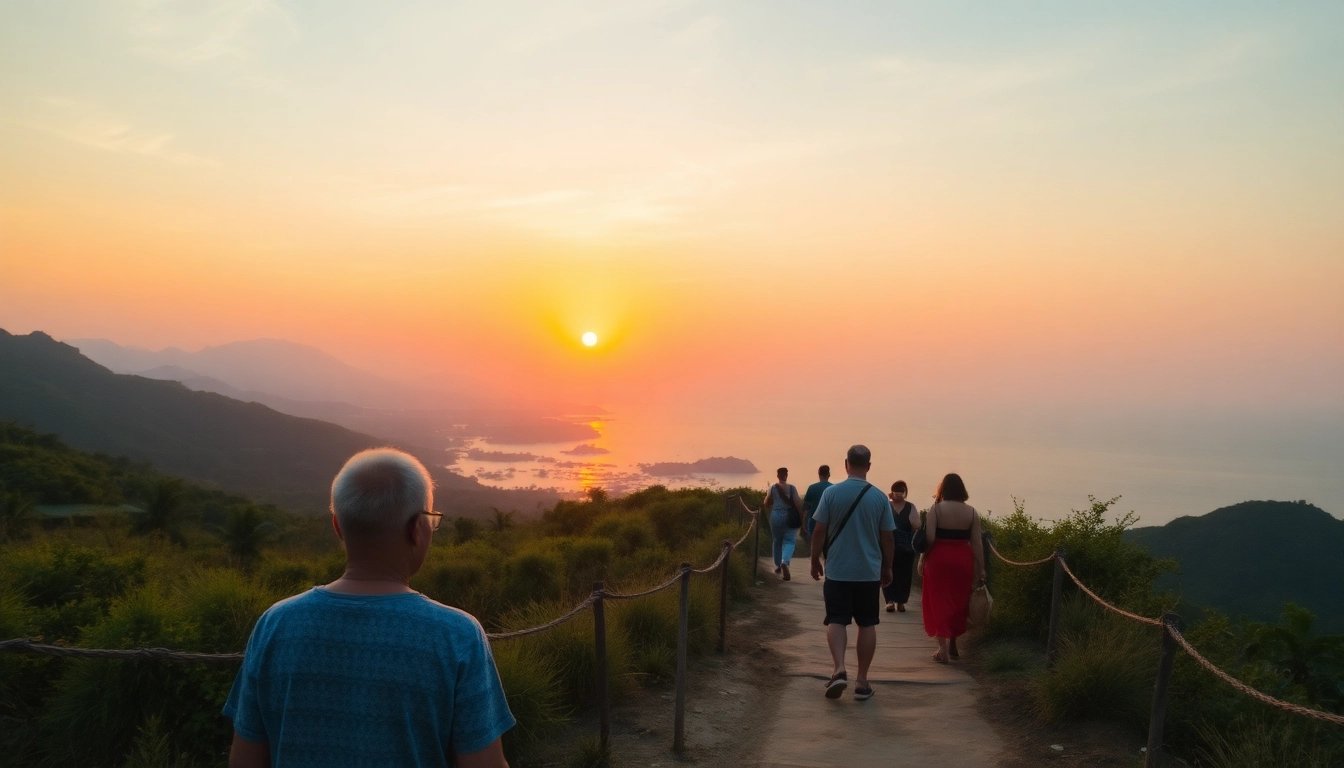Introduction to Lombok: Your Essential Guide
Nestled east of Bali and renowned for its breathtaking landscapes, vibrant culture, and diverse attractions, Lombok is an Indonesian island that promises an unforgettable journey for travelers seeking adventure, tranquility, and authentic local experiences. Whether you are an avid hiker, a beach lover, or a cultural enthusiast, Lombok offers a rich tapestry of sights and activities tailored to a broad spectrum of interests. Planning your visit can seem overwhelming, especially for first-time travelers, but with this comprehensive guide, you will be equipped with all the practical insights and expert tips needed to navigate Lombok with confidence and ease.
Why Visit Lombok? Unique attractions and cultural highlights
Lombok stands out as a must-visit destination within Indonesia for myriad reasons. Its famed natural landmarks include Mount Rinjani, Indonesia’s second-highest volcano, which beckons adventurers with challenging treks and awe-inspiring vistas. The Gili Islands—just a short boat ride from Lombok’s coast—are renowned for crystal-clear waters, vibrant coral reefs, and relaxed island life, making them ideal for snorkeling and diving enthusiasts.
But Lombok isn’t just about natural beauty; it’s steeped in rich cultural traditions. The Sasak people, indigenous inhabitants of Lombok, maintain a vibrant heritage reflected in their unique weaving, music, and dance forms. Visiting traditional villages like Sukarara or Sade provides a glimpse into authentic Lombok culture and craftsmanship, offering travelers meaningful interactions beyond the typical tourist spots.
Moreover, Lombok’s unspoiled beaches such as Kuta Beach and Selong Belanak offer pristine sands and surf-perfect waves, attracting surfers from around the world. The island’s warm hospitality, combined with its stunning landscapes and cultural richness, makes Lombok an essential destination for those eager to explore Indonesia’s diverse treasures.
Best Time to Travel: Seasonal insights and climate tips
Timing your visit to Lombok is crucial for optimizing your experience. The island enjoys a tropical climate, with a dry season spanning from May to September, and a rainy season from November to April. The dry season is highly recommended for outdoor activities like trekking, diving, and island hopping, with July and August offering the best weather conditions—hot days, clear skies, and calm seas.
However, the high season also means increased prices and crowds. To avoid the peak tourist influx while still enjoying favorable weather, consider visiting during the shoulder months of April, May, or September. These months typically feature fewer visitors and moderate weather, providing both comfort and serenity.
The monsoon months from November to March bring heavy rains and rough seas, which can hinder travel plans and outdoor adventures, especially sea-based activities. Nevertheless, this period can be an excellent time for cultural exploration, as fewer tourists are present, and local festivals or ceremonies may align with your visit.
Planning Your Trip: Budgeting, accommodation, and transportation tips
Budgeting Your Trip
Lombok caters to a wide range of budgets. Budget travelers can find hostels, guesthouses, and homestays for as low as $10–$25 USD per night, especially in areas like Senggigi or Kuta. Mid-range accommodations with private rooms, pools, and amenities typically range from $30–$100 USD. Luxury resorts and private villas, particularly around the Gili Islands or on Lombok’s main coast, can exceed $150 USD per night, offering world-class comfort and service.
Accommodation Tips
Choosing the right accommodation depends on your travel style. For adventure seekers, staying in a eco-lodge or budget guesthouse in the foothills of Rinjani offers both affordability and proximity to trekking routes. Cultural enthusiasts may prefer staying in traditional Sasak villages or boutique hotels in Senggigi that promote local artistry.
Book your accommodations in advance during peak season to ensure availability and better rates. Platforms like Booking.com, Agoda, and local travel agents can offer options with authentic experiences—such as staying in a traditional Lombok homestay that includes meals and cultural exchanges.
Transportation Tips
Getting around Lombok is straightforward but requires some planning. The most common mode of transport is renting a scooter, which costs around $5–$10 USD per day. For longer distances or groups, hiring a private driver or using organized tour services is more comfortable and safer, especially when traveling to remote areas like Mount Rinjani or secluded beaches.
Public transportation options are limited, but local “bemos” (shared vans) operate between major towns and popular tourist areas. For international travelers arriving via Lombok International Airport, shuttle services and rental agencies provide convenient options to reach your accommodation.
Top Destinations in Lombok: A Guide to Must-See Places
Mount Rinjani: Trekking routes and safety advice
Standing at 3,726 meters, Mount Rinjani is the crown jewel of Lombok’s natural attractions. It offers one of Indonesia’s most rewarding trekking experiences, with routes suitable for different fitness levels. The popular Senaru base camp trail takes roughly two days, while the Sembalun route is favored for its scenic vistas and relatively easier climb.
Before attempting Rinjani, thorough preparation is vital. Ensure you’re physically fit, acclimatized to high altitudes, and equipped with proper gear—warm clothing, headlamps, trekking poles, and a reliable guide. Many trekking groups include porters, guides, and safety equipment, which you should book through certified operators.
Weather can be unpredictable at higher elevations, with sudden rain or fog. Always check mountain conditions and adhere to safety instructions. It’s recommended to climb during the dry season for the best conditions and to minimize risks.
Gilis Islands: Snorkeling and diving experiences
The Gili Islands—Gili Trawangan, Gili Air, and Gili Meno—are Indonesia’s premier island getaway, famed for their vibrant marine life and crystal-clear waters. Each island offers a unique vibe: Gili Trawangan is lively and bustling, while Gili Meno is tranquil and perfect for honeymooners.
Water activities abound, from snorkeling over coral gardens to scuba diving with manta rays and turtles. The best time for underwater adventures is during the dry season, especially from June to September when visibility is optimal.
Many dive centers and tour operators provide certification courses, day trips, and night dives. If you’re new to diving, consider a PADI certification course conducted by professional instructors. Always prioritize safety and environmental responsibility by avoiding touching marine life or damaging coral reefs.
Traditional Villages: Cultural immersion and local craftsmanship
To truly understand Lombok’s cultural fabric, visiting traditional Sasak villages like Sade and Sukarara is essential. These villages showcase authentic weaving techniques, traditional architecture, and local customs passed down through generations.
Sukarara is famous for its intricate weaving and textile art, where visitors can observe artisans creating colorful fabrics and buy handcrafted souvenirs. Sade offers an immersive experience into daily life, with activities like traditional cooking, cattle herding, and participation in ritual ceremonies.
Engaging with local communities not only enriches your travel experience but also supports sustainable tourism and preserves Lombok’s cultural heritage.
Activities and Adventures: Your Guide to Fun and Exploration
Surfing Spots: Best beaches and surf conditions
Lombok’s reputation as a top surfing destination is well-earned, with beaches catering to both beginner and expert surfers. Kuta Beach and Selong Belanak are ideal for learners, offering gentle swells and sandy stretches perfect for first-timers.
For experienced surfers seeking challenging waves, spots like Ekas Bay and Gerupuk provide powerful breaks during the dry season. The surf season peaks from May to September, aligning with the dry weather pattern.
Surf schools and rental shops are plentiful along the coast, offering beginner lessons, board rentals, and guided surf trips. Always heed safety warnings, be aware of reef hazards, and respect local surfing etiquette.
Wildlife and Nature Tours: Conservation and eco-tourism opportunities
Lombok’s rich biodiversity extends beyond marine life. The island hosts unique habitats like Rinjani National Park, home to endangered species such as the ebony leaf monkey and the Lombok tortoise.
Eco-tours and wildlife sanctuaries offer responsible ways to connect with nature. Guided jungle walks, bird watching, and conservation projects prioritize sustainability and habitat preservation. Participating in such activities supports local conservation efforts and provides educational experiences.
Night Markets and Food Tours: Savor authentic Lombok cuisine
No trip to Lombok is complete without indulging in its vibrant culinary scene. Night markets in Senggigi, Mataram, and Kuta serve a variety of local dishes such as Ayam Taliwang (spicy grilled chicken), Plecing Kangkung (water spinach salad), and fresh seafood grilled over open flames.
Food tours led by local guides offer a chance to sample traditional flavors, learn cooking techniques, and share in community festivities. Visiting street vendors and night markets not only supports small businesses but also allows authentic cultural exchange.
Travel Tips and Practical Guide: Navigating Lombok Effectively
Local Customs and Etiquette: Cultural awareness and respectful travel
Respect for local customs enhances your experience and fosters positive interactions. In Lombok, modest dress is advisable, especially when visiting religious sites or rural villages. Women are recommended to cover shoulders and knees, and men should avoid shirtless attire in formal settings.
Greetings are typically exchanged with a smile and a slight bow. When visiting homes or participating in ceremonies, remove your shoes and be mindful of local traditions. Learning a few basic Indonesian phrases—such as “Terima Kasih” (Thank you)—also shows respect and appreciation.
Safety and Health Guide: Precautions and emergency contacts
Health and safety should be prioritized during your trip. Carry a basic first aid kit, insect repellent, sunscreen, and sufficient hydration. Be cautious on slippery or uneven terrain, especially during treks or beach walks.
In case of emergencies, contact local authorities or your embassy. The main hospital in Mataram, Rumah Sakit Umum Daerah (RSUD), provides essential medical services. It’s also wise to have travel insurance that covers adventure activities and medical emergencies.
Language Tips: Basic Indonesian phrases for travelers
While English is increasingly spoken in tourist areas, learning some simple Indonesian words can significantly enhance your interactions. Useful phrases include:
- Selamat pagi — Good morning
- Terima kasih — Thank you
- Berapa harganya? — How much does it cost?
- Di mana toiletnya? — Where is the bathroom?
- Tolong — Please
Understanding basic phrases demonstrates respect and often results in more genuine local engagement.
Planning Your Perfect Lombok Experience: Expert Tips
Customizing Your Itinerary: Tailoring trips for adventure or relaxation
Whether you seek adrenaline-fueled adventures or tranquil retreats, customizing your itinerary ensures a meaningful experience. For active travelers, allocate days for Rinjani trekking, diving, and surfing. Relaxation seekers might focus on beach lounging, spa visits, and cultural workshops.
Consult local tour operators and guides to craft bespoke programs that align with your interests, time constraints, and physical capacity. Incorporate rest days to fully enjoy each activity without exhaustion.
Essential Packing Tips: What to bring for different activities
- Hiking and Trekking: sturdy shoes, layered clothing, trekking poles, hat, sunglasses, and waterproof gear
- Beach and Water Activities: swimwear, snorkeling gear, reef-safe sunscreen, waterproof bag
- Cultural Visits: modest clothing, scarf, respectful footwear
- General Essentials: insect repellent, medications, durable backpack, travel documents, flashlight
Resources and Contacts: Trusted guides and tour operators in Lombok
Partnering with reputable local guides and tour companies is key to a safe and enriching experience. Look for certified adventure companies with good reviews and transparent safety policies. Established operators often offer package deals that include transportation, meals, and permits—saving you time and ensuring quality service.
Some recommended resources include local travel agencies specializing in eco-tourism, certified trekking guides for Rinjani, and community-based tourism initiatives promoting sustainable development. Always check references and request detailed itineraries before confirming bookings.






